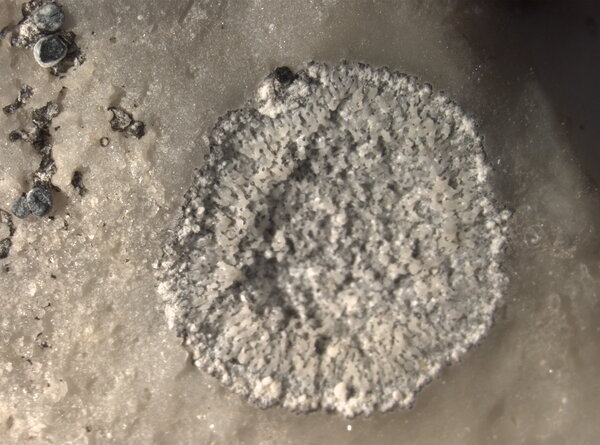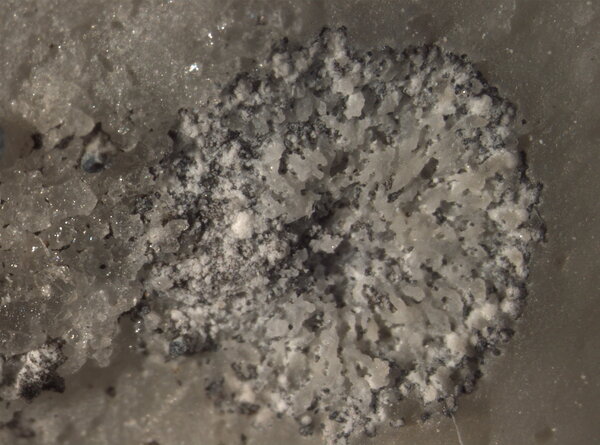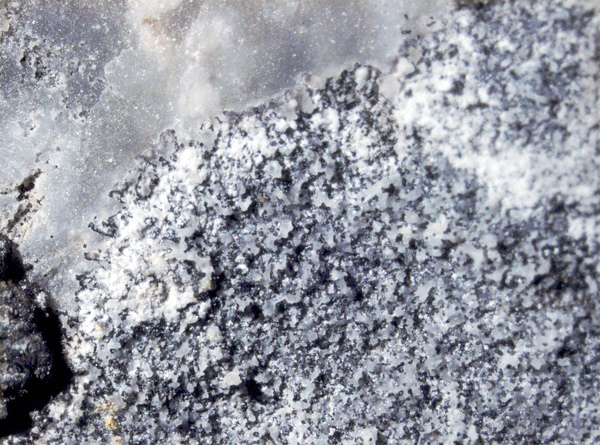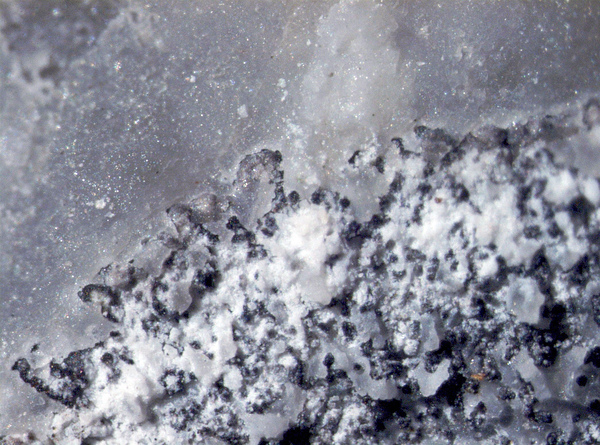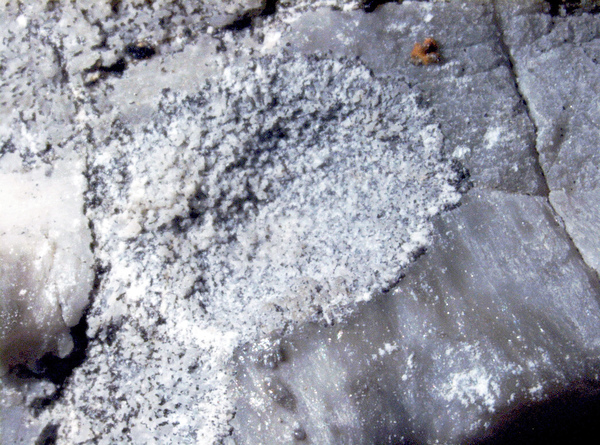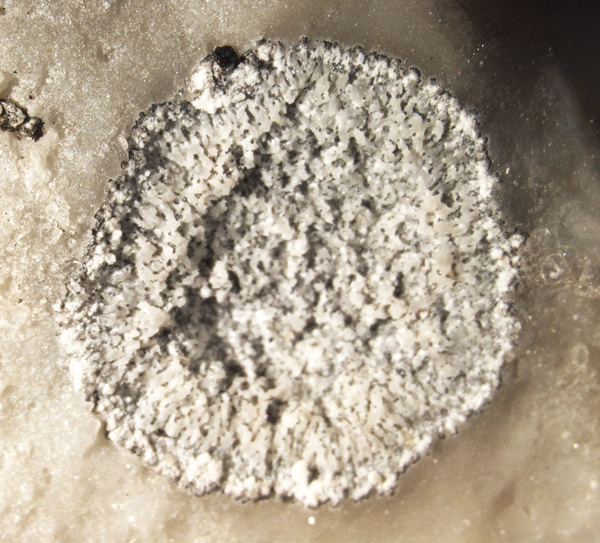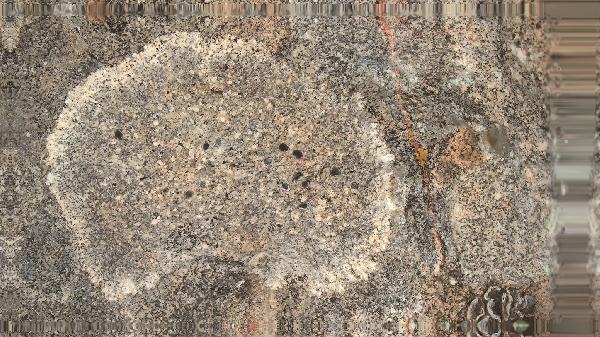Pyrenodesmia erodens (Tretiach, Pinna & Grube) Søchting, Arup & Frödén
in Arup & al., Nord. J. Bot., 31: 72, 2013. Basionym: Caloplaca erodens Tretiach - Pinna & Grube, Mycol. Prog., 2: 129, 2003.
Synonyms:
Distribution: N - Frl (Hafellner & Muggia 2006, Tretiach 2015d), Ven (Tretiach & al. 2003, Nascimbene 2004, 2005c, Thor & Nascimbene 2007, Nascimbene & Marini 2007), TAA (Tretiach & al. 2003, Nascimbene 2004, Nascimbene & al. 2004, 2004b), Piem (Tretiach & al. 2003, Morando & al. 2014, 2016, 2019), VA (Tretiach & al. 2003). C - Marc (Tretiach & al. 2003), Umb (Tretiach & al. 2003), Abr (Tretiach & al. 2003, Tretiach & Muggia 2006, Muggia & al. 2007, Gheza & al. 2021). S - Camp (Tretiach & al. 2011c), Cal (CLU 17452), Si (Nascimbene & al. 2021).
Description: Thallus crustose, mostly endosubstratic and poorly evident, ecorticate, forming characteristic orbicular, often later confluent and irregular, concave-eroded, up to 6-8 cm wide, indistinctly sorediate, pale bluish grey patches on the rock, delimited by a whitish, mostly epilithic and obscurely lobed prothallus. Soralia often poorly visible, bluish-grey to violaceous, diffuse, consisting of grey, K+ violet, 45-75 μm thick soredia formed by small, irregular clusters of photobiont cells surrounded by appressed, inflated hyphal cells emerging from the rock surface. Apothecia extremely rare, 0.2-0.4 mm across, round to irregular in outline, with a black but often slightly bluish-grey-pruinose disc and a thin, grey margin. Proper exciple thick, dark grey or grey-green in outer part, colourless within, with minute crystals insoluble in N, the pigmented parts K+ violet; epithecium grey, K+ violet, C+ red-violet, N+ vivid violaceous; hymenium colourless, up to 60-70 μm high, I+ strongly blue; paraphyses simple or sparingly branched, the apical cells swollen, up to 4-5 μm thick, pigmented as the outer part of the exciple; hypothecium colourless. Asci (4-)6-8-spored, clavate, functionally unitunicate, apically thickened with a broad internal beak, the inner part of apex and external cap I+ blue, Teloschistes-type. Ascospores 2-celled, polarilocular, hyaline, ellipsoid, 10-19 x 6-9 μm. Pycnidia very rare, immersed, located in marginal parts of thallus. Conidia bacilliform, 5-7 x 1.5–2 µm. Photobiont chlorococcoid. Spot tests: all negative in thallus, or soredia K+ violet. Chemistry: Sedifolia-grey pigment in soredia and apothecia (outer part of exciple and epithecium). Note: a recently-described, characteristic species, probably more widespread in upland areas. It occurs on exposed, subvertical faces of hard limestone and dolomite, including old monuments, in dry sites of the montane and subalpine belts. The total distribution extends to the Irano-Turanian Region: I have observed the species in Armenia and on the tomb of Cyrus in Pasargade (Iran).
Growth form: Crustose endolithic
Substrata: rocks
Photobiont: green algae other than Trentepohlia
Reproductive strategy: mainly asexual, by soredia, or soredia-like structures (e.g. blastidia)
Commonnes-rarity: (info)
Alpine belt: rather common
Subalpine belt: common
Oromediterranean belt: rather rare
Montane belt: common
Submediterranean belt: extremely rare
Padanian area: absent
Humid submediterranean belt: absent
Humid mediterranean belt: absent
Dry mediterranean belt: absent
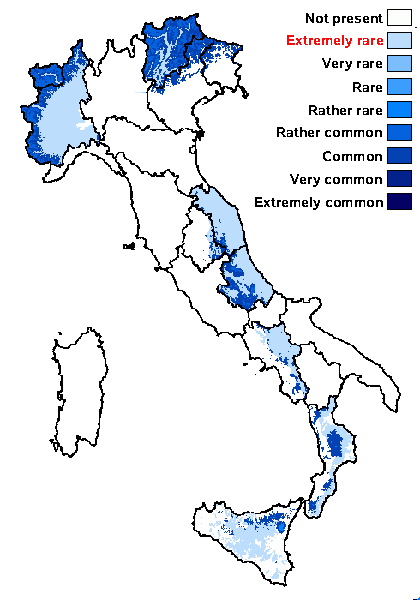
Predictive model
Herbarium samples


P.L. Nimis; Owner: Department of Life Sciences, University of Trieste
Herbarium: TSB (sine numero)
2001/12/18
thallus margin
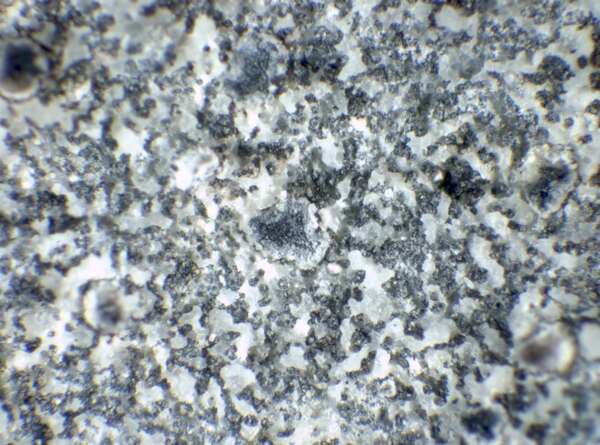

P.L. Nimis; Owner: Department of Life Sciences, University of Trieste
Herbarium: TSB (sine numero)
2001/12/18
apothecia
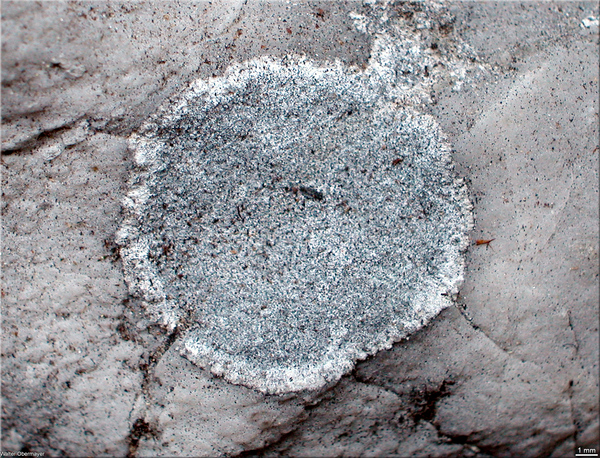
Walter Obermayer CC BY-SA 4.0 - Source: Lichens of Noricum - http://lichens-of-noricum.uni-graz.at/
09.09.1990
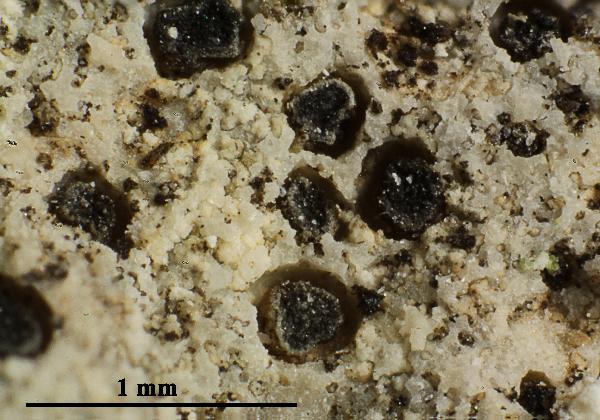

Felix Schumm - CC BY-SA 4.0
[VZR499, 19553], Italia, Abruzzo, prov. L'Aquila, loco Rovere, prope
ruinam arcis, 1440 m, ad saxa calcarea. Leg. M. Tretiach & D. Pinna
(TSB 34131, Isotypus), 23.6.2003. EX A. VEZDA: LICHENES RARIORES
EXSICCATI NR. 499.
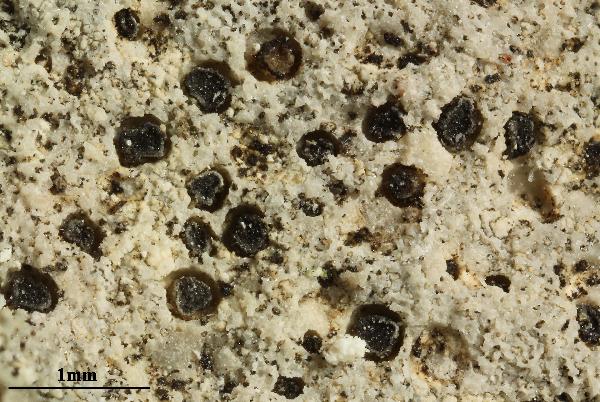

Felix Schumm - CC BY-SA 4.0
[VZR499, 19553], Italia, Abruzzo, prov. L'Aquila, loco Rovere, prope
ruinam arcis, 1440 m, ad saxa calcarea. Leg. M. Tretiach & D. Pinna
(TSB 34131, Isotypus), 23.6.2003. EX A. VEZDA: LICHENES RARIORES
EXSICCATI NR. 499.


Felix Schumm - CC BY-SA 4.0
[VZR499, 19553], Italia, Abruzzo, prov. L'Aquila, loco Rovere, prope
ruinam arcis, 1440 m, ad saxa calcarea. Leg. M. Tretiach & D. Pinna
(TSB 34131, Isotypus), 23.6.2003. EX A. VEZDA: LICHENES RARIORES
EXSICCATI NR. 499.
Growth form: Crustose endolithic
Substrata: rocks
Photobiont: green algae other than Trentepohlia
Reproductive strategy: mainly asexual, by soredia, or soredia-like structures (e.g. blastidia)
Commonnes-rarity: (info)
Alpine belt: rather common
Subalpine belt: common
Oromediterranean belt: rather rare
Montane belt: common
Submediterranean belt: extremely rare
Padanian area: absent
Humid submediterranean belt: absent
Humid mediterranean belt: absent
Dry mediterranean belt: absent

Predictive model
| Herbarium samples |


P.L. Nimis; Owner: Department of Life Sciences, University of Trieste
Herbarium: TSB (sine numero)
2001/12/18
thallus margin


P.L. Nimis; Owner: Department of Life Sciences, University of Trieste
Herbarium: TSB (sine numero)
2001/12/18
apothecia

Walter Obermayer CC BY-SA 4.0 - Source: Lichens of Noricum - http://lichens-of-noricum.uni-graz.at/
09.09.1990


Felix Schumm - CC BY-SA 4.0
[VZR499, 19553], Italia, Abruzzo, prov. L'Aquila, loco Rovere, prope ruinam arcis, 1440 m, ad saxa calcarea. Leg. M. Tretiach & D. Pinna (TSB 34131, Isotypus), 23.6.2003. EX A. VEZDA: LICHENES RARIORES EXSICCATI NR. 499.


Felix Schumm - CC BY-SA 4.0
[VZR499, 19553], Italia, Abruzzo, prov. L'Aquila, loco Rovere, prope ruinam arcis, 1440 m, ad saxa calcarea. Leg. M. Tretiach & D. Pinna (TSB 34131, Isotypus), 23.6.2003. EX A. VEZDA: LICHENES RARIORES EXSICCATI NR. 499.


 INDEX FUNGORUM
INDEX FUNGORUM
 GBIF
GBIF
 DOLICHENS
DOLICHENS
